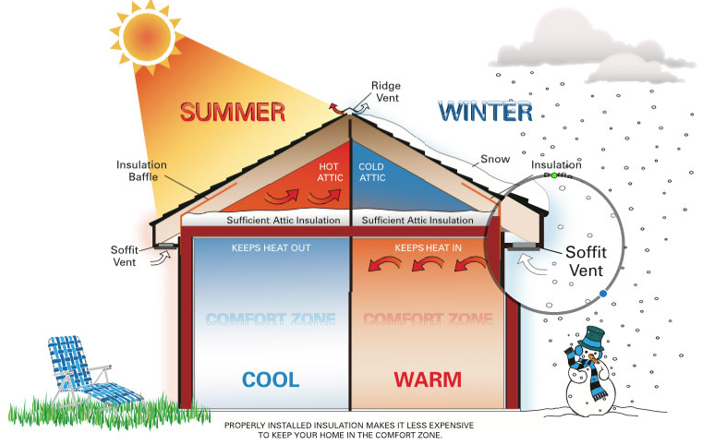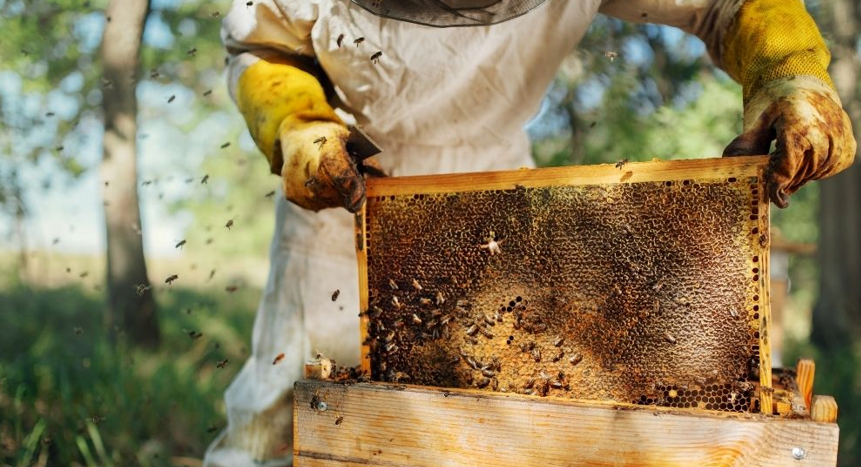Langstroth’s “Intelligent Cultivator” Part 7 of 7 – Helping Honey Bees Thrive
- Posted
What will you do to help honeybees thrive?
During the last decades, the beekeeping industry has seen very few changes and improvements on the widely used Langstroth wooden hive. The recent development of new insulation materials with higher proprieties compared to wood could provide better alternatives for the beekeeping industry. For example, a study of polyurethane hives showed that polyurethane hives maintained a significantly higher overall temperature (11°C/52°F) than wooden hives (9°C/48°F) with a significantly more optimal relative humidity (52.05%) compared to the wooden hives (62.50%). The higher humidity wooden hives could be attributed to increased metabolic activity and honey consumption to generate more heat. It is significant to note that inner temperature patterns of the wooden hives exhibited pronounced oscillations compared to the polyurethane hives attributed to higher thermal conductivity and lower R-value. Both hive groups showed significant differences in temperature insulation (regulation) between day and night cycles. However, the polyurethane hives seem to provide better stability in humidity between days and nights compared to Langstroth wooden hives. Small changes and improvements in beekeeping practices and equipment, including hive types and materials, can contribute to reducing honeybee mortality rates, particularly winter mortality.
Finally, materials that assist in homeostatic regulation through a lower rate of thermal conductivity, higher R-value, hysteresis lag allowing more time for adaptive responses, and steady humidity can significantly reduce temperature changes within the environment. This is most important to developing brood where it has been found that exposure to high internal temperatures impairs honeybee development health, as well as wing, proboscis, and leg sizes.
More attention needs to be given to hive style and materials by beekeepers not only to improve survivor rates of our honeybees but help them thrive at a time where current approaches are not keeping up with the pests and pathogens they are facing in our environment. Convenience and “cheapness” must take a back seat for the “Intelligent Cultivator”
Glossary
- Tree nest –a tall, narrow, thick-walled tree cavity high above the ground.
- Man-made enclosure – normally a thin-walled (19mm, 3/4”) squat wooden enclosure on or just above the ground. Most research and apiculture are conducted in this enclosure style with Langstroth hives being the predominant style in the USA.
- “Extended” Phenotypes – are commonly thought of as physical structures, such as spider webs, beaver dams, termite nests, and honeybee hives where the phenotype is the fitness of the construction for survival and reproduction of the organism. A honeybee’s phenotype is understood to be the observable characteristics or traits of an organism that are produced by the interaction of the genotype and the environment–the physical expression of one or more genes.
- Thermal Conductivity – A measure of the ability of a material to allow the flow of heat from its warmer surface through the material to its colder surface. This transfer of heat energy continues until all the material comprising the solid is at thermal equilibrium, meaning the temperature throughout the material is the same.

- Hysteresis – The lagging of an effect behind its cause.
- R-Value (Thermal Resistance Value) – a measure of how well a two-dimensional barrier, such as a layer of wood, a window or a complete wall or ceiling, resists the conductive flow of heat. Preventing the flow of heat into or out of something. Our houses in Southwest Ohio are supposed to have an R-value of 38-60 in the attic, 13-15 in the walls, 25-30 in the floors, 25-30 in crawl spaces. A well-insulated house is cool in the summer and warm in the winter.
Examples:
- Pine 1.3R per inch, 3/4” = 0.98R (pine tree cavity with 4” sides 5.2R, top could be infinite.
- Maple 1R per inch (tighter grains transfer heat faster)
- Plywood 1.10R per inch, 11/32” = 0.76R
- Polyurethane foam board = 5R per inch, 1 ½” = 7.5R
- Carpet and pad 1.28R per inch
- Brick 2.25R per inch
- Insulated Layens hive has an expected 8-9R on all sides.

- Homeostasis – The ability and tendency of certain systems to maintain a relatively constant internal state despite changes in external conditions; this ability is achieved by the presence of feedback mechanisms which can adjust the state of the system to compensate for changes in the state caused by the external environment.
- Endotherm (warm-blooded) – An endotherm is an organism that maintains its body at a metabolically favorable temperature, largely using heat released by its internal bodily functions instead of relying almost purely on ambient heat. Ectothermic animals rely on external sources to regulate their body temperature.
- Stenotherm (honeybee larvae) – A stenotherm is a species or living organism only capable of living or surviving within a narrow temperature range.
- Poikilothermic – Having a body temperature that varies depending on the outside temperature.
- Thermoregulation (colony/superorganism) – Maintenance of a constant internal body temperature independent from the environmental temperature.
Referenced Material
- Ratios of colony mass to thermal conductance of tree and man-made nest enclosures of Apis mellifera: implications for survival, clustering, humidity regulation and Varroa destructor https://static1.squarespace.com/static/5994976fc534a540838f3351/t/5cc1f0a7419202bb8ede360e/1556213933897/Mitchell+Ratio+Of+Mass.pdf
- Honeybee cluster—not insulation but stressful heat sink https://royalsocietypublishing.org/doi/10.1098/rsif.2023.0488
- Cold Comfort https://www.uaex.uada.edu/farm-ranch/special-programs/beekeeping/uabeeblog/posts/coldcomfort.aspx
- Honeybee (Apis mellifera) size determines colony heat transfer when brood covering or distributed https://link.springer.com/article/10.1007/s00484-022-02308-z
- Understanding Colony Buildup and Decline: Part 13c – The Winter, and Hive Design https://scientificbeekeeping.com/understanding-colony-buildup-and-decline-part-13c/
- Research challenges widespread belief that honeybees naturally insulate their colonies against cold https://phys.org/news/2023-11-widespread-belief-honeybees-naturally-insulate.pdf
- Beekeeping Theories Debunked: The Real Buzz on Honeybee Insulation https://scitechdaily.com/beekeeping-theories-debunked-the-real-buzz-on-honeybee-insulation/
- Endothermic heat production in honeybee winter clusters https://journals.biologists.com/jeb/article/206/2/353/13914/Endothermic-heat-production-in-honeybee-winter
- Endothermic heat production in honeybee winter clustersHoneybee Colony Thermoregulation – RegulatoryMechanisms and Contribution of Individuals in Dependence on Age, Location and Thermal Stress https://journals.plos.org/plosone/article/file?id=10.1371/journal.pone.0008967&type=printable
- The influence of temperature and photoperiod on the timing of brood onset in hibernating honeybee colonies https://www.ncbi.nlm.nih.gov/pmc/articles/PMC5971834/
- Coping with the cold and fighting the heat: thermal homeostasis of a superorganism, the honeybee colony https://www.ncbi.nlm.nih.gov/pmc/articles/PMC8079341/
- Respiration of resting honeybees https://www.ncbi.nlm.nih.gov/pmc/articles/PMC3227735/
- Thermoregulatory morphodynamics of honeybee swarm clusters https://journals.biologists.com/jeb/article/225/5/jeb242234/274635/Thermoregulatory-morphodynamics-of-honeybee-swarm
- Polyurethane honeybee hives provide better winter insulation than wooden hives https://www.tandfonline.com/doi/full/10.1080/00218839.2021.1999578
- Honeybees (Hymenoptera: Apidae) Adapt to the Shock of High Temperature and High Humidity Through Changes in Sugars and Polyols and Free Amino Acids https://www.ncbi.nlm.nih.gov/pmc/articles/PMC9874260/
- Impacts of high temperature during early capped brood on pupal development and the size of appendages in adult workers Apis cerana https://www.frontiersin.org/articles/10.3389/fevo.2023.1144216/full
- A Review on Thermoregulation Techniques in Honeybees’ (Apis Mellifera) Beehive Microclimate and Its Similarities to the Heating and Cooling Management in Buildings https://www.researchgate.net/publication/343512588_A_Review_on_Thermoregulation_Techniques_in_Honey_Bees%27_Apis_Mellifera_Beehive_Microclimate_and_Its_Similarities_to_the_Heating_and_Cooling_Management_in_Buildings
- Coping with the cold and fighting the heat: thermal homeostasis of a superorganism, the honeybee colony https://link.springer.com/article/10.1007/s00359-021-01464-8
- Understanding How Insulation Works so you can make the best choices when insulating your Beehive https://backyardhive.com/blogs/winterizing-your-hive/understanding-how-insulation-works-so-you-can-make-the-best-choices-when-insulating-your-beehive
- Thermal Conductivity – https://en.wikipedia.org/wiki/List_of_thermal_conductivities
- Laboratory study on the effects of temperature and three ventilation rates on infestations of Varroa destructor in clusters of honey bees (Hymenoptera: Apidae) – https://pubmed.ncbi.nlm.nih.gov/22299336/
